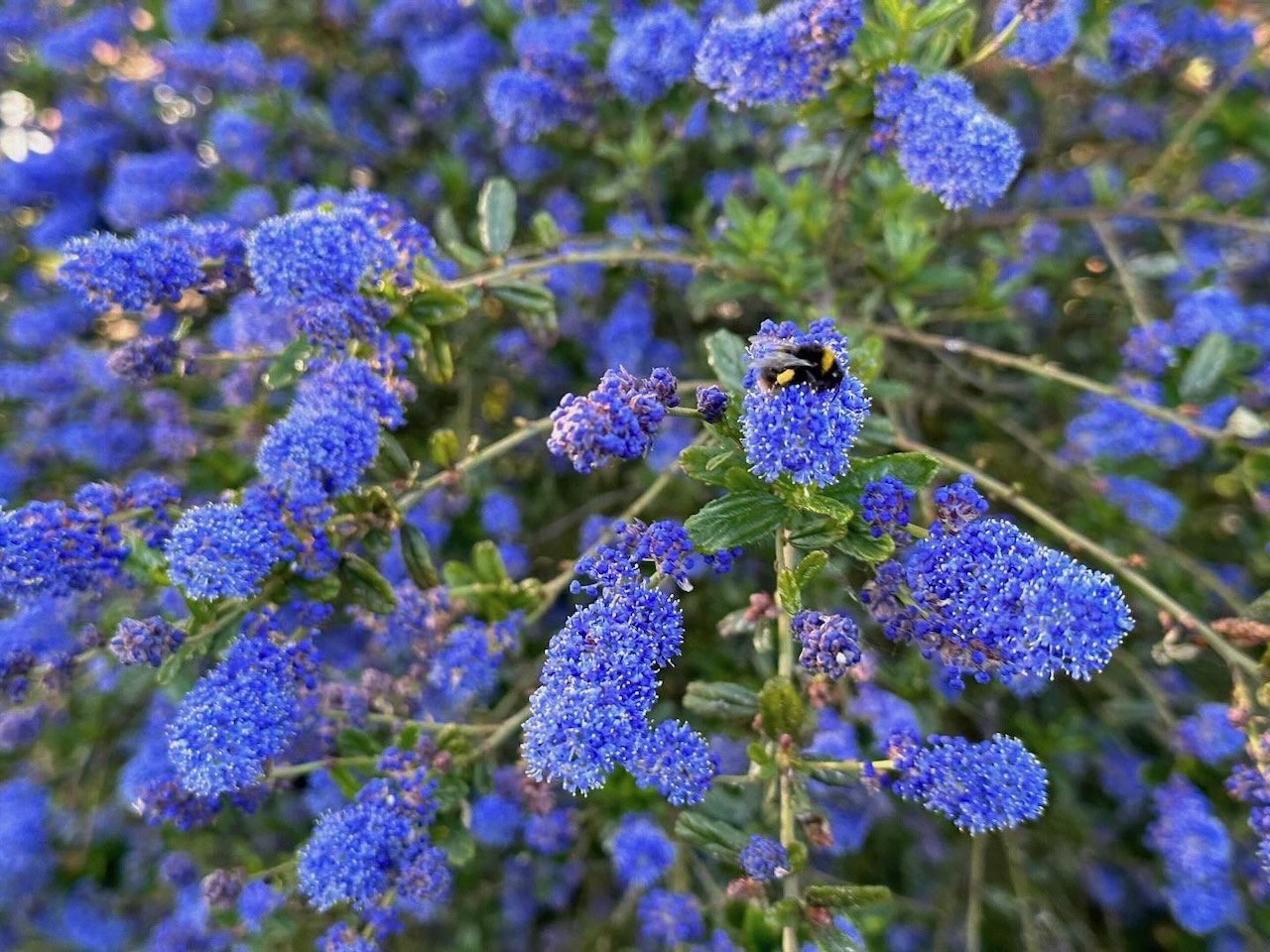Hi @susan-hadden
Thanks for your question.
Ceanothus, also known as California lilac, thrives in a Mediterranean climate with mild, wet winters and warm, dry summers. It has, as you will know, electric blue flowers that emerge in May here in the UK. It makes a great wall shrub as it will grow up walls without suckering and provide a softness to harsh brickwork.
You're right to ask when the best time to prune a Ceanothus is as they can be a bit temperamental, and poorly timed pruning can cause irreversible damage to this gentle shrub!
When should I prune Ceanothus?
Pruning ceanothus lightly after flowering is recommended to maintain a compact shape and encourage bushier growth. However, excessive pruning should be avoided as ceanothus blooms on old wood, and heavy pruning can reduce flowering. Ceanothus do not respond well to hard pruning, in fact it can kill them if you're not careful.
So my advice for you would be to wait until its flowered in the next month or so then cut this branch back to an outward facing bud at the correct length so it doesn't take anyone eyes out as they pass!

What are the best-growing conditions for Ceanothus?
The ideal conditions for growing ceanothus include a climate with moderate temperatures and low humidity, such as coastal regions of California. These plants prefer full sun exposure to thrive and produce abundant blooms, requiring at least 6-8 hours of direct sunlight per day.
Well-draining soil is essential for ceanothus, preferably sandy or loamy soil with good drainage and a slightly acidic to neutral pH level (pH 6.0-7.0). Heavy clay soils should be avoided as they can cause root rot. Once established, ceanothus is drought-tolerant and requires minimal watering. Overwatering should be avoided as it can lead to root rot, especially during the summer months.
In colder climates, protection from frost and freezing temperatures, especially for young plants, is necessary. Mulching around the base of the plant can help retain soil moisture and protect the roots during winter. Providing these optimal conditions will ensure healthy and vibrant ceanothus plants in your garden.
I hope that helps Susan!
Happy gardening
Lee
Hi @susan-hadden
Thanks for your question.
Ceanothus, also known as California lilac, thrives in a Mediterranean climate with mild, wet winters and warm, dry summers. It has, as you will know, electric blue flowers that emerge in May here in the UK. It makes a great wall shrub as it will grow up walls without suckering and provide a softness to harsh brickwork.
You're right to ask when the best time to prune a Ceanothus is as they can be a bit temperamental, and poorly timed pruning can cause irreversible damage to this gentle shrub!
When should I prune Ceanothus?
Pruning ceanothus lightly after flowering is recommended to maintain a compact shape and encourage bushier growth. However, excessive pruning should be avoided as ceanothus blooms on old wood, and heavy pruning can reduce flowering. Ceanothus do not respond well to hard pruning, in fact it can kill them if you're not careful.
So my advice for you would be to wait until its flowered in the next month or so then cut this branch back to an outward facing bud at the correct length so it doesn't take anyone eyes out as they pass!

What are the best-growing conditions for Ceanothus?
The ideal conditions for growing ceanothus include a climate with moderate temperatures and low humidity, such as coastal regions of California. These plants prefer full sun exposure to thrive and produce abundant blooms, requiring at least 6-8 hours of direct sunlight per day.
Well-draining soil is essential for ceanothus, preferably sandy or loamy soil with good drainage and a slightly acidic to neutral pH level (pH 6.0-7.0). Heavy clay soils should be avoided as they can cause root rot. Once established, ceanothus is drought-tolerant and requires minimal watering. Overwatering should be avoided as it can lead to root rot, especially during the summer months.
In colder climates, protection from frost and freezing temperatures, especially for young plants, is necessary. Mulching around the base of the plant can help retain soil moisture and protect the roots during winter. Providing these optimal conditions will ensure healthy and vibrant ceanothus plants in your garden.
I hope that helps Susan!
Happy gardening
Lee
 Lee Burkhill: Award Winning Designer & BBC 1's Garden Rescue Presenters Official Blog
Lee Burkhill: Award Winning Designer & BBC 1's Garden Rescue Presenters Official Blog



